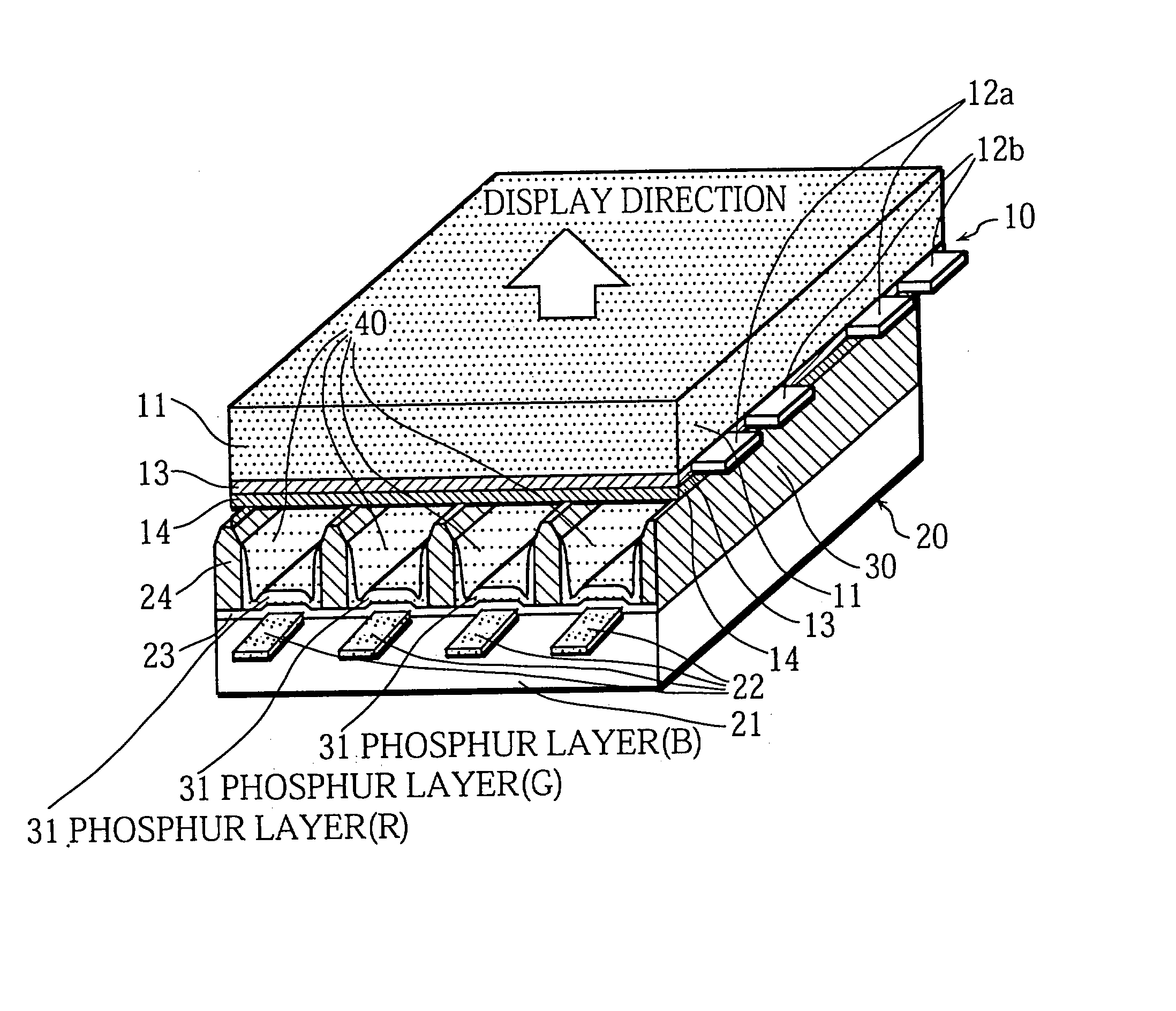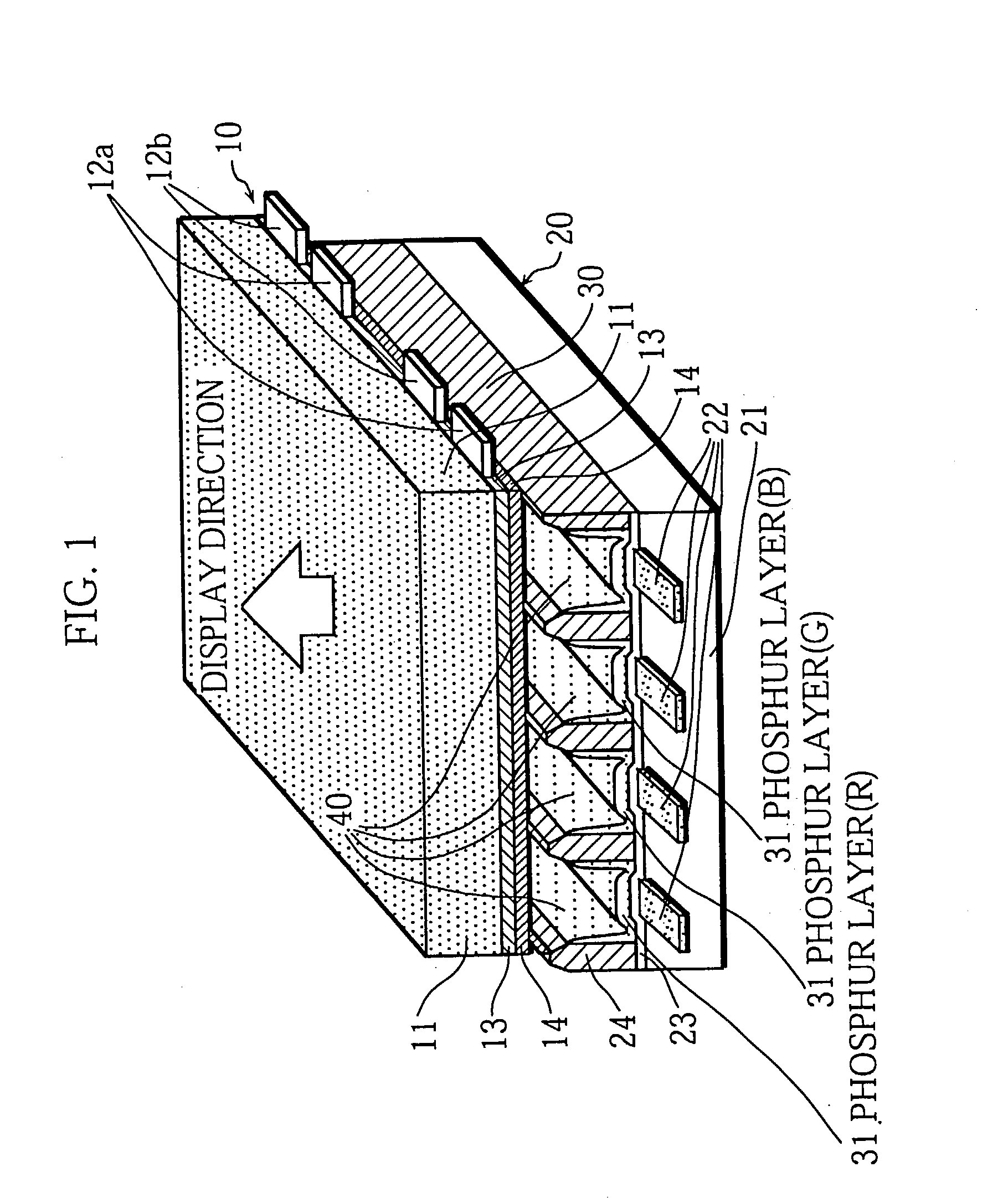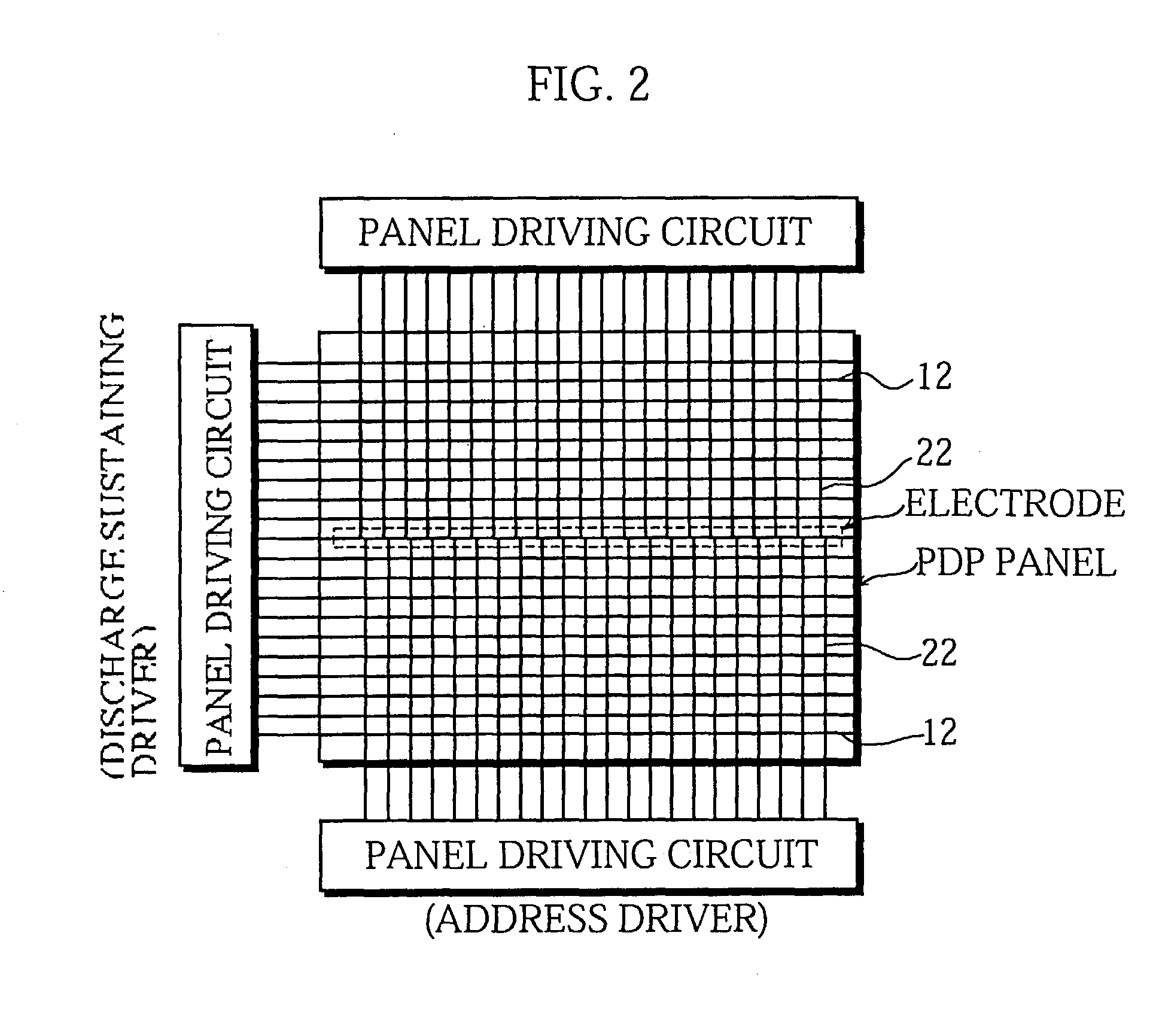Plasma display panel manufacturing method for manufacturing a plasma display panel with superior picture quality, a manufacturing apparatus, and a phosphor ink
a plasma display panel and plasma technology, applied in the manufacture of electrode systems, discharge tubes luminescent coatings, electrode systems, etc., can solve the problems of difficult manufacturing of large-screen lcds, crts are not suited to the production of large tvs, and the depth and weight of crt televisions increas
- Summary
- Abstract
- Description
- Claims
- Application Information
AI Technical Summary
Benefits of technology
Problems solved by technology
Method used
Image
Examples
second embodiment
[0273] Second Embodiment
[0274] FIG. 12 is a perspective drawing of the ink application apparatus of the present embodiment, while FIG. 13 shows a frontal elevation (partially in cross-section) of this ink application apparatus.
[0275] This ink application apparatus has fundamentally the same constructionas the ink application apparatus 50 described earlier, though it further includes other mechanisms, such as a circulating mechanism that collects and uses phosphor ink and a nozzle revolving mechanism that revolves a nozzle head including a plurality of nozzles to adjust the nozzle pitch.
[0276] Construction of the Ink Application Apparatus
[0277] The present ink application apparatus is composed of a main body 100 and a controller 200.
[0278] The main body 100 includes a main base 101, a rail 102 laid on the upper surface of the main base 101, a substrate mounting stand 103 that moves along the rail 102 in the X-axis (shown by the arrow X in the drawing), an arm 104 provided so as to cr...
third embodiment
[0329] Third Embodiment
[0330] The ink application apparatus of the present embodiment is similar to the ink application apparatus of the second embodiment, but has a different circulating mechanism for circulating phosphor ink.
[0331] FIG. 18 shows the construction of the ink circulating mechanism in the ink application apparatus of the present embodiment.
[0332] Like the circulating mechanism 150 of the second embodiment, the circulating mechanism 160 collects phosphor ink that has been expelled by the nozzles 113 of the nozzle head 112 using a collecting vessel 151 and supplies the phosphor ink that has been collected back to the nozzle head 112. However, a disperser 161 is also provided on the supply route from the collecting vessel 151 to the nozzle head 112.
[0333] The disperser 161 is a sand mill in the form of a flow pipe that is filled with zirconia beads with a particle diameter of 2 mm or less. The rotation discs 163 spin at 500 rpm or below in a predetermined direction so th...
fourth embodiment
[0350] Fourth Embodiment
[0351] Arrangement Related to First Dispersion
[0352] Various modifications were made to the dispersion method (type and diameter of the beads, dispersion time) used during the manufacturing (i.e. during the first dispersion) of phosphor inks of various colors, as shown in Table 10.
10TABLE 10 TYPE AND PARTICLE DIAMETER OF COMPOSITION DISPERSION PHOSPHURS OF INK METHOD DISPERSION MEDIUM YGdBO3:Eu PHOSPHURS: 60 wt % BEAD MILL GLASS BEADS: 2 mm 3.0 .mu.m SOLVENT: 39 wt % 60 min ZIRCONIA BEADS: 0.2 mm ETHYL CELLULOSE: 1 wt % ZIRCONIA BEADS: 2 mm Zn2SiO4:Mn PHOSPHURS: 60 wt % BEAD MILL GLASS BEADS: 2 mm 3.0 .mu.m SOLVENT: 39 wt % 60 min ZIRCONIA BEADS: 0.2 mm ETHYL CELLULOSE: 1 wt % ZIRCONIA BEADS: 2 mm BaMgAl10O17:Eu PHOSPHURS: 60 wt % BEAD MILL GLASS BEADS: 2 mm 3.0 .mu.m SOLVENT: 39 wt % 60 min ZIRCONIA BEADS: 0.2 mm ETHYL CELLULOSE: 1 wt % ZIRCONIA BEADS: 2 mm YGdBO3:Eu PHOSPHURS: 60 wt % BEAD MILL: 15 min ZIRCONIA BEADS: 0.2 mm 3.0 .mu.m SOLVENT: 39 wt % BEAD ...
PUM
 Login to View More
Login to View More Abstract
Description
Claims
Application Information
 Login to View More
Login to View More - R&D
- Intellectual Property
- Life Sciences
- Materials
- Tech Scout
- Unparalleled Data Quality
- Higher Quality Content
- 60% Fewer Hallucinations
Browse by: Latest US Patents, China's latest patents, Technical Efficacy Thesaurus, Application Domain, Technology Topic, Popular Technical Reports.
© 2025 PatSnap. All rights reserved.Legal|Privacy policy|Modern Slavery Act Transparency Statement|Sitemap|About US| Contact US: help@patsnap.com



